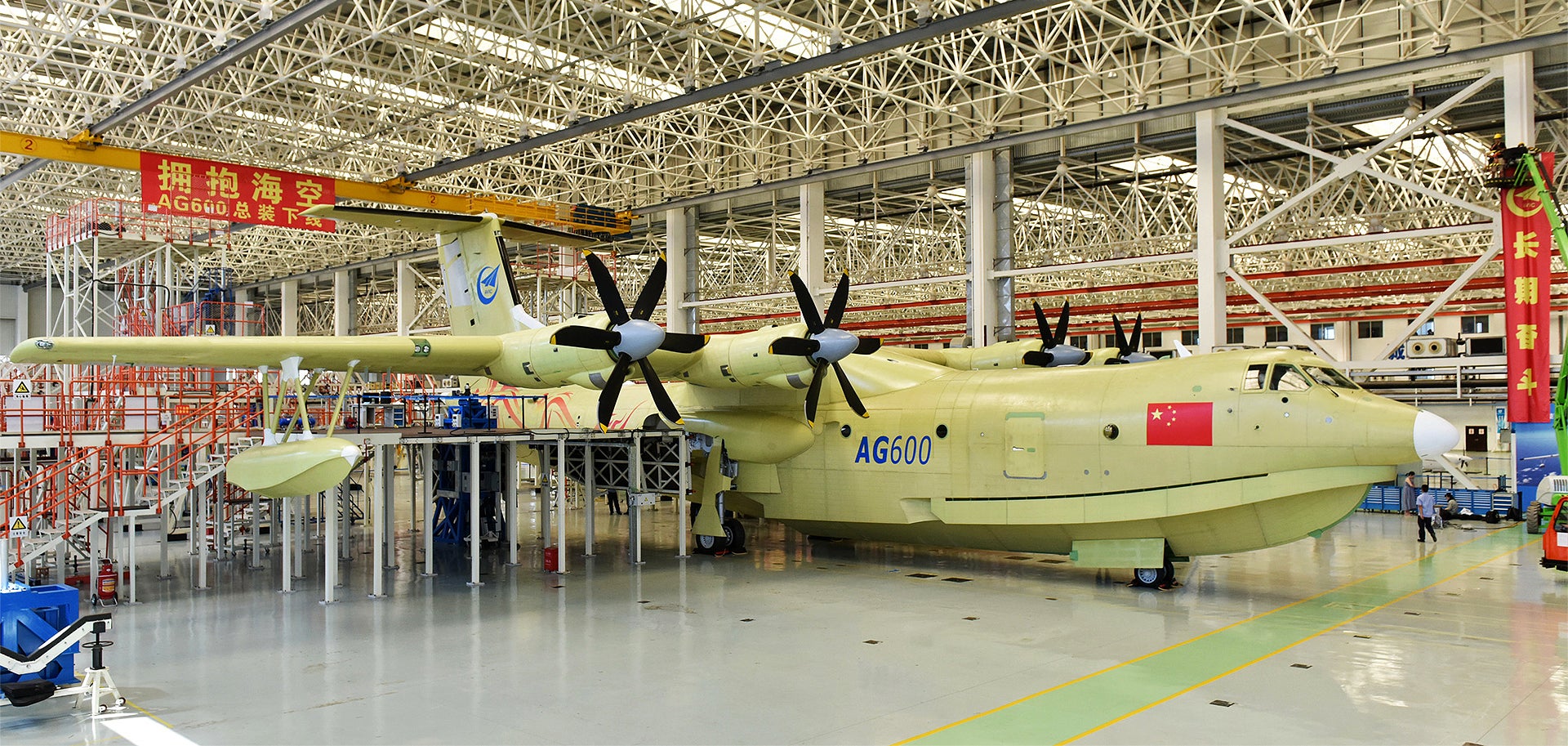The Aviation Industry Corporation of China, better known as AVIC, rolled out its massive quad-turboprop amphibian, dubbed the AG600, on July 23 at its Zhuhai assembly plant. The aircraft’s unique lines and throw-back pedigree are sure to make it an aerospace aficionado favorite, but a real military capability lies beneath all the nostalgia.
Amphibians and flying boats hold a special place in aviation history. At one time they were commonplace, now they are exceedingly rare. The US even eyed an amphibious C-130 at one time, although the idea never got off the ground. With long runways existing all over the place after WWII the design tradeoffs of making a plane also a boat became unfavorable. This was especially so after the jet age hit and by the 1980s amphibians and flying boats were oddities.
With this in mind, and also considering that putting a new type of aircraft into production is very expensive, especially one with limited marketability, the AG600 clearly must fit a strategic hole for the Chinese that needed filling.
Actually, China is no stranger to amphibious aircraft, with a handful of SH-5s still in service, but the AG600 is a whole different animal. It is the largest amphibious aircraft currently being produced, beating-out Japan’s ShinMaywa US-2 which previously held the title.
The AG600 has a max gross-weight of nearly 110,000 pounds and a wingspan of 127 feet. It is powered by a quartet of WJ6 turboprop engines, each putting out 5,100 horsepower. It can fly for 12 hours, has a range of nearly 3,000 miles and a top speed of 350 mph. It can carry up to 50 passengers or 12 tons of water for firefighting operations. Most notably, the AG600 only needs about eight feet of water to operate in, making it ideal for flying in and out of shallow littorals.
Although China’s official stance is that these big amphibians will be used for dousing blazes and maritime rescue operations, they will most certainly also be used for patrolling large swathes of water, namely the contested and resource rich waterways of the South China Sea.
Similar to how China’s super-sized “coast guard” ships are used in the region, the AG600 will likely be used for spotting, monitoring, and tracking fishing fleets, energy exploration vessels and other nations’ claims and readouts around the highly disputed body of water.

The AG600 may also offer enhanced access to China’s smaller man-made island outposts in the South China Sea, especially those without runways. By using a hub and spoke system, leveraging China’s new runway on Fiery Cross Reef, which is capable of handling any aircraft, the AG600 could deliver personnel, fuel and other supplies to smaller islands that were only accessed by vessels and helicopter in the past. With the aircraft’s long-range It could also fly missions to these locales direct from the mainland while still offering a large useful load. By adding fixed-wing accessibility to more of its man-made islands, China would drastically up their strategic value and utility.
Really what China has in the AG600 is a new amphibious platform that can be adapted to a whole variety of roles than a specific plane for a specific task. And like so many indigenous Chinese designs, we will likely see multiple variants of this type in the not so distant future.
The AG600 could easily be weaponized at least in the surveillance role. Even adding a fighter-sized radar under the aircraft’s large radome and a data-link could allow the aircraft to provide real-time remote targeting of naval vessels for land-based and sea-based anti-ship missiles. It will also be interesting to see if future iterations include under-wing hardpoints for mounting stores and sensors. If so, the AG600 could be turned into a deadly amphibious sea-control platform or a more elaborate anti-submarine warfare aircraft.
The AG600, like the giant Zubr class hovercraft, is just another unique platform that China has procured as part of an ongoing initiative to fortify its abilities to operate in shallow waters and to sustain small cadres of personnel on remote islands far from the mainland. It is also another reminder of just how militarized the area is becoming.
Beijing has ordered 17 of the amphibians so far and is looking to export the plane as well. We will let you know when it takes to the air for the first time.
Contact the author Tyler@thedrive.com
